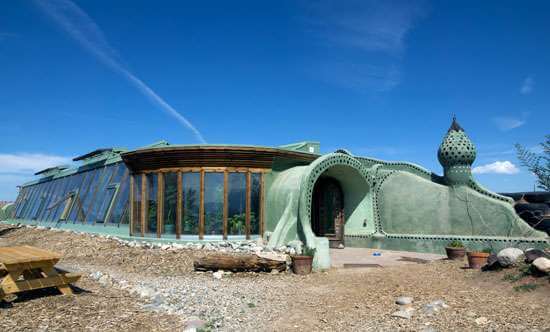From Guest Blogger Derek Lotts: Greener and More Sustainable Construction with Advanced Building Materials

Recycled steel
Using recycled steel in construction is not only gaining in popularity, but it’s also becoming a necessity. Considering the fact that an average house requires anywhere from 40 to 50 trees for its frame, it becomes quite obvious why recycled steel is a much better option. The amount of steel needed for the same house’s frame equals 5 to 6 recycled cars. If we look at the fact that, in 2012, the scrap industry recycled well over 55 metric tons of ferrous metal in the U.S. alone, it becomes obvious why recycled steel is a much better solution. Finally, not only does recycling steel waste 75 percent less energy than producing it, but it decreases the size of the landfills as well.
Recycled concrete
Recycled concrete is another popular material used in green construction. Mining limestone or gravel needed to make “new” concrete releases a lot of CO2, so reusing the existing one is definitely smarter. Also, concrete is not biodegradable, which means that its waste takes up a lot of space in the landfills. So, you can see how reusing it benefits our planet. However, there are some things you should be aware of. Concrete that is not properly set can change the acidity levels of the underground waters and soil. This usually happens when recycled concrete is mixed with various filling materials that are used to reduce the amount of cement needed in the mix, since cement is a bit pricey. On the other hand, finding a reputable company dealing in this line of work is a foolproof way to make sure that the recycled concrete is as green as possible. Many recycling plants make fantastic cleantech investment opportunities.
Recycled waste
Various forms of recycled waste are usually used for alternative insulation solutions. Since insulation is not visible (it’s usually placed in the walls and floors), it doesn’t have to look presentable. And what greener way to insulate a home than to use, basically, old junk. Some of the most popular solutions are recycled jeans (cotton insulation) and newspaper (cellulose insulation). Fiberglass insulation is also pretty popular, but making it is more energy-intensive than making cotton or cellulose insulation. Also, the latter two are better at stopping airflow and are much healthier options than fiberglass.
Saving other resources
When talking about green construction, materials used are not the only factor in achieving eco-friendliness. Time, money and resources spent on the building project also make a difference. For example, a solid foundation is the most important part of any building. By using the traditional hobs (again, usually made of timber), this project can be difficult, time-consuming and, the worst part is that it can also turn out to be inaccurate in the end. That’s why using prefabricated permanent formwork is a much better option. The advantages of this type of formwork are that it retains its shape (tinder hobs can sometimes bend or warp) and is easy to install. What’s more, since it’s prefabricated, all the other elements that are later to be connected to the formwork can also be pre-made, which makes the job much faster and, therefore, cheaper.
Other honorable mentions
Some other elements of green, sustainable buildings are cool roofs (instead of shingle roofs) that better reflect sun’s rays than other roofing solutions, adequate stormwater management, low-E windows that prevent the hot air from entering/escaping the room, low-VOC or no-VOC paint and many other.
Our planet is (at least for now) our only home, so we must do our best to keep it safe and healthy for as long as possible. Embracing eco-friendliness in all aspects of the society is the first step toward a green future.
